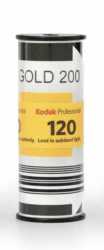>>4237026Ive tested them quite extensively put of curiosity when I worked in a film lab.
CMS20 > Copex Rapid and other similar films > Retro 80s > TMax 100 > Delta 100 > Provia 100f/Velvia 100f > Velvia 50 > Acros | Pan F+
The sharpest colour neg absolutely was Fujicolor C200 / Gold 200 (same iirc). Grainier than Portra and others but it looked nice, the fact it is in 120 now and probably the same film is great for film shooters,
Ektar 100 was nice and absolutely the finest grained but comes at the expensive of resolution, lower resolving than the other colour negs.
The best balance was Konica Centuria Super 100 in 120 @ 50 pull processed in C41. Exceedingly fine whole retaining resolution/sharpness. Gave it to the tech who initially installed and calibrated the scanner as a sample who seemed confused for a short while and did a double take it was actually colour neg film. I only had 10 rolls at the same and it's a shame I wasted it on dumb shit and boring nature photos like tree stumps in a forest.
I can hit around 35mp on Tmax100 in. 35mm but again that's at the barely visible level and very to see. You can manipulate most films into higher resolution with some tricks though it's harder on t grain films, but still should work with the smaller grains developing faster esp with increased exposure.
Overexposure and pulling typical offsets the gain due to reduction in developed contrast, but you can die a dev with a higher hydroquinone ratio with more restrained to make a speed losing contrast increasing developer than should work.
Well and ridiculously sharper lenses also boost it up since there is substantially lens to film resolution loss than lens to sensor resolution loss, like 100 lens + 100 film = 70 on the neg etc or something like that, substantially increasing one or the other will boost what you get on the neg. So it's not impossible to get a big boost on Tmax, Velvia etc over conventional gear with stupidly expensive lenses

